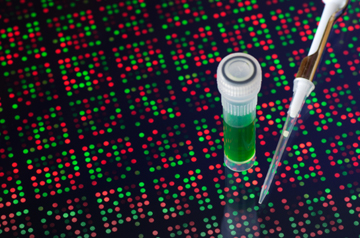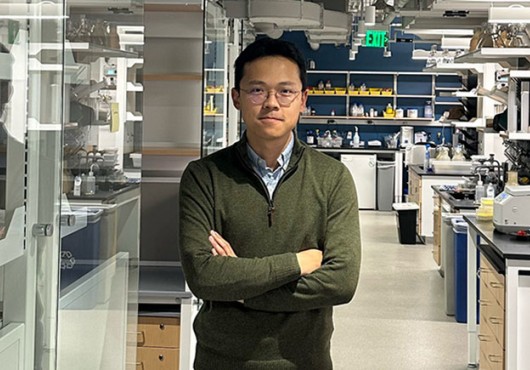
A new screening platform using cells grown directly from tumor biopsy samples may lead to truly individualized treatment strategies, according to research led by Harvard Medical School researchers at the Massachusetts General Hospital Cancer Center.
Their approach holds promise for getting around treatment resistance, which limits the effectiveness of current targeted-therapy drugs.
In a paper published in Science, the scientists describe how they screened samples grown from treatment-resistant tumors against a panel of current and potential targeted-therapy drugs. This allowed them to identify previously unknown resistance mechanisms, several of which could not be found by gene sequencing.
“Genetics has been extremely useful for guiding treatment, but in many cases tumor genetics are ambiguous or do not reveal a mutation that informs a therapeutic strategy,” said Jeffrey Engelman, the Laurel Schwartz Associate Professor of Medicine at HMS and at Mass General. He is co-senior author of the paper. “These functional pharmacologic studies can identify effective therapeutic choices even when the genetics fail to do so.”
While drugs targeting the genetic changes that drive tumor growth can induce remission and give many patients significant symptom relief, in almost all cases the effects are temporary. In a year or two, resistance develops, either through secondary mutations that block the original drug’s action on the target molecule or through activation of a secondary pathway to carry molecular signals that sustain tumor growth.
Previous efforts to study resistance mechanisms—either by inducing resistance in the laboratory using established cell lines or by looking for new mutations in resistant tumor cells—have significant limitations.
Instead, the Mass General team combined genetic analysis of resistant tumors with pharmacologic screening. The scientists tested cell lines grown directly from the patients’ tumor samples against drugs that target molecules or reactions involved in cell growth and survival.
Using recently developed technology that facilitates growing cell lines from patient samples, the researchers established 24 viable lines from patients’ resistant lung tumors. Each cell line was tested against a panel of 76 targeted drugs—17 that are FDA approved and 59 that are in various stages of development. The drugs were tested both alone and in combination with the first-line drug to which the tumor had become resistant.
The drugs were applied to both the 24 patient-derived lines and to another 36 established lines in which resistance had been cultivated in the laboratory. In five established cell lines with known mechanisms of resistance, the pharmacologic screen accurately identified drugs targeting these tracks of resistance, which confirmed the strategy’s usefulness.
When the approach was used to assess a large panel of resistant cell lines, including those found in patient biopsies, at least one effective combination—a secondary drug that restored the effectiveness of the first-line therapy—was identified in 45 of the 55 lines in which the resistance mechanism had been unknown.
Several of these “hits” identified resistance mechanisms that would not have been detected by genetic analysis. For example, the researchers’ finding that a drug inhibiting fibroblast growth factor receptor 3 (FGFR3) restored sensitivity to a drug inhibiting epidermal growth factor receptor (EGFR) was the first reported evidence of the EGFR drug’s involvement in treatment resistance.
In another patient-derived cell line, adding a MEK inhibitor restored the treatment sensitivity of tumor cells driven by ALK mutations. Genetic analysis of that cell line revealed both a mutation known to activate the MEK pathway and another mutation affecting an enzyme called JAK3. But only the pharmacologic screen determined that resistance was conferred by the MEK mutation, since JAK inhibitors did not re-sensitize that cell line to ALK inhibition.
Although combining MEK and ALK inhibitors was effective in only one patient sample, several other ALK-positive tumors were re-sensitized by drugs that inhibit SRC enzymes, even though no SRC-related mutations were present. Further evidence indicated that inhibiting ALK led to activation of SRC-controlled pathways that promoted resistance.
The scientists also found that combining ALK and SRC inhibitors as first-line therapy might delay the emergence of resistance. The efficacy of this combination was demonstrated in multiple mouse models.
“We expected effective combinations to be specific against particular cell lines rather than broadly active, and this is largely what we found,” said Cyril Benes, HMS assistant professor of medicine at Mass General and co-senior author of the report. “The broad activity of the combination of ALK and SRC inhibitors across ALK-driven models suggests this may be a common, previously unsuspected resistance mechanism. We were able to validate four of these combinations in animal models, but many more were indicated across the cell lines that we tested.”
The team is now developing technologies that could make it practical to incorporate pharmacologic screening into clinical practice. These include biopsy and culturing procedures that would yield enough cells to screen within a few weeks of the patient’s biopsy.
“This screen was so effective that we think it warrants a serious effort to develop the technology for personalized treatment decision making,” said Engelman.
The study was supported by National Institutes of Health grants R01CA137008, R01CA164273, 1U54HG006097-01, and P50CA090578; Wellcome Trust grants 086357 and 102696; and funds from the Department of Defense, the Conquer Cancer Foundation, Uniting Against Lung Cancer, Free to Breathe, Lungevity and Be a Piece of the Solution.
Adapted from a Mass General news release.


